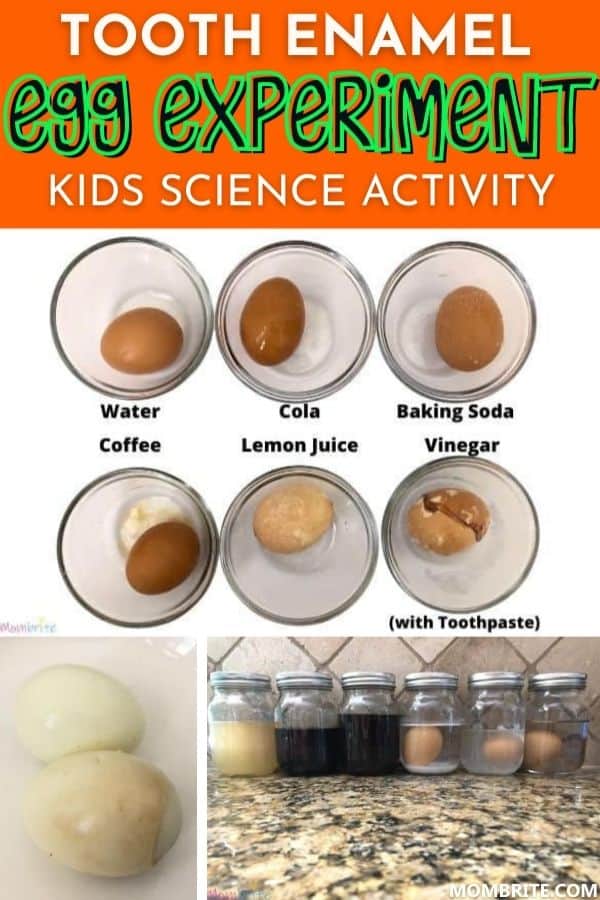Do your kids resist brushing their teeth? After this tooth decay experiment with eggshells, they might run to clean their teeth after a meal!
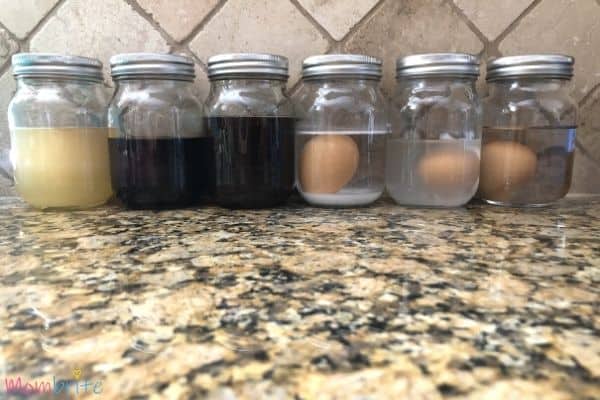
Eggshells have a similar chemical composition to tooth enamel, so they react similarly to other chemicals. In this tooth decay experiment, we will explore what stains tooth enamel and what breaks them down.
Did you know that enamel is the hardest substance created by the human body? Yup, tooth enamel, which covers our teeth and protects them, is even stronger than bone. So once then enamel is damaged, it’s not possible to 100% restore it.
This eggshell decay activity is excellent to show your kids what happens to their teeth if they keep eating or drinking certain liquids without brushing.
The Tooth Enamel Egg Experiment
Materials:
- Hardboiled eggs
- Soda
- Coffee
- Vinegar
- Lemon juice
- Baking soda
- Water
- Cups or jars
- Optional: Toothpaste
Directions:
- Pour the different liquids in each cup or jar. Fill them up with enough liquids to cover the entire egg. I listed the ones we tested above, but feel free to experiment with other liquids as well.
- Carefully add a single, hard-boiled egg to each cup or jar. Optional: Cover half of one egg with toothpaste and place it into the glass or jar. You can pick which liquid you want to use. This will test if fluoride toothpaste helps protect teeth against tooth decay.
- Cover and let them sit in the liquids.
- Leave for 2-3 days. I placed all the jars in the fridge after about 12 hours to ensure that the eggs don’t spoil at room temperature.
- Take out the eggs and observe the changes in the eggshells.
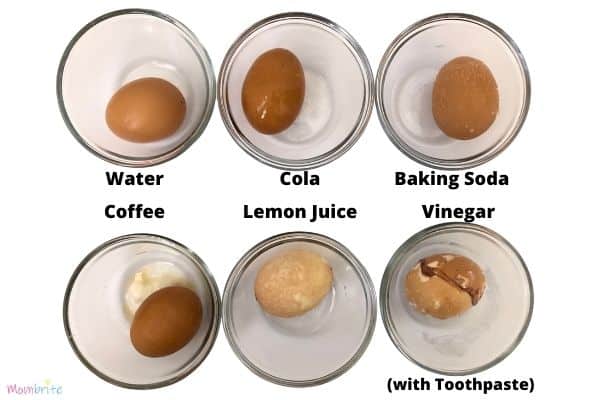
I have to admit. This eggshell decay experiment is probably the most disgusting experiment we ever did. Every time I opened the fridge door, I see the lemon juice and vinegar eating away at the eggshells, and it was not a pretty sight.
I was very interested in seeing what happened to the egg in the lemon juice. Long story short, at one point, I was drinking a lot of lemon water, and my teeth started to get very sensitive. My dentist told me that the acid eating away at my enamels, so parts of my teeth had little to no enamel left.
Here are the results we got:
Soda
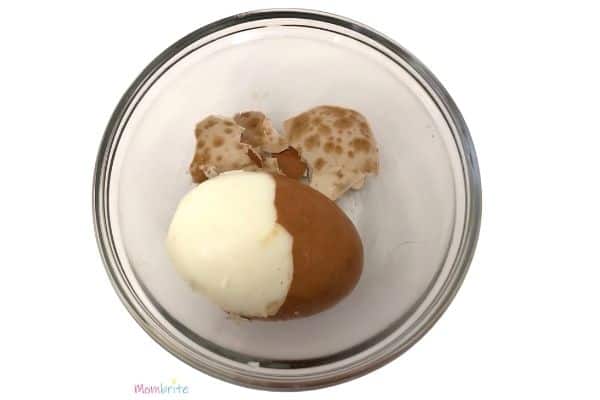
Exterior:
The egg soaked in soda had a darker appearance than the one in water. The stain on the eggshell would not come off even after washing the egg under running water.
Interior:
The cola seemed to have started to permeate the eggshell so you can see dark spots on the inside of the eggshells. The egg itself seemed not affected by the soda.
Coffee
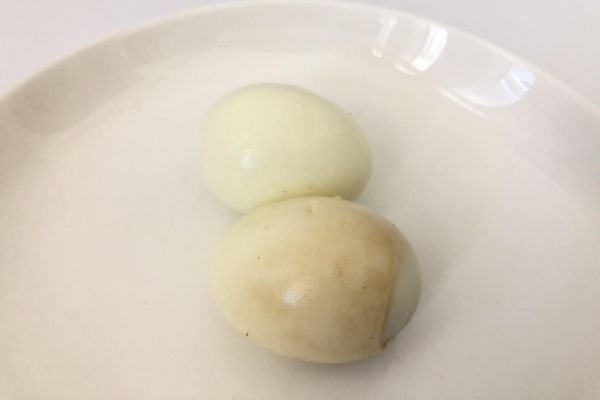
Exterior
The eggshell was darker, slightly more than the soda.
Interior
Interestingly, the inside of the eggshell remained white. However, the coffee had stained the egg white or the albumen. I checked to make sure that the eggshell wasn’t cracked. I wonder if we had left the egg in coffee for a few more days if the egg would continue to get more and more stained.
If you are a coffee drinker (I am!), perhaps you should brush your teeth or at least rinse your mouth after drinking coffee to avoid stained teeth!
Lemon Juice
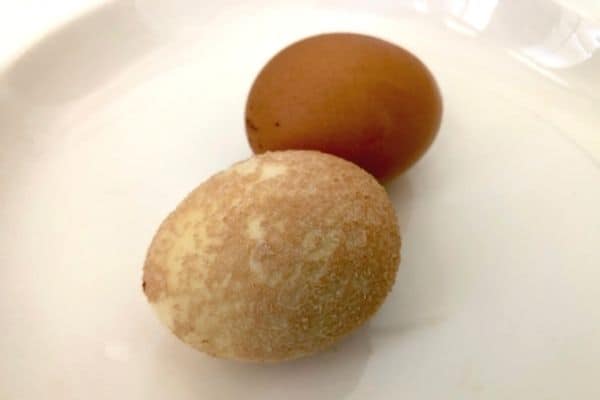
Exterior:
The eggshell had the strongest reaction to the lemon juice. Within hours of submerging the egg in lemon juice, you could already see parts of the eggshell started to flake off. After a couple of days, almost the entire eggshell dissolved so you could see the inside of the egg.
Interior:
Since there was barely any shell to peel, we observed the egg white through the holes in the eggshell. The egg white had turned yellow like the color of the lemon juice.
Baking Soda
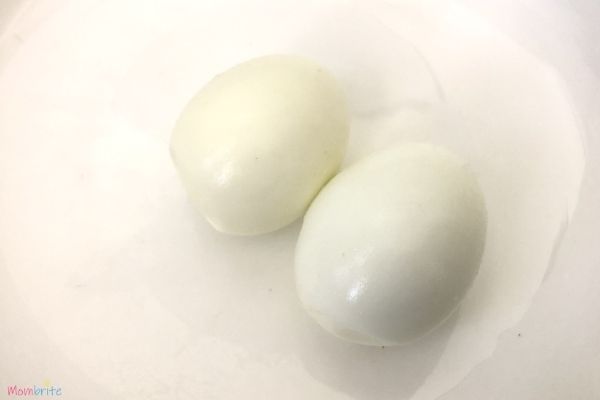
Exterior:
There seemed to be no change on the outside of the eggshell. Some of the baking soda stuck to the eggshell, making the shell harder to crack than the one in water.
Interior:
The egg white seemed to be whiter than the one in the water! The whitening effect was a surprise as we did not expect the baking soda to have any impact on the inside of the egg.
We do need to take this result with a grain of salt as eggs do vary in color on the inside. This particular egg could be naturally whiter to begin with, and the lighter color could have nothing to do with the baking soda. More testing is necessary to confirm the whitening effect of baking soda.
Vinegar (with Half of the Egg Covered in Fluoride)
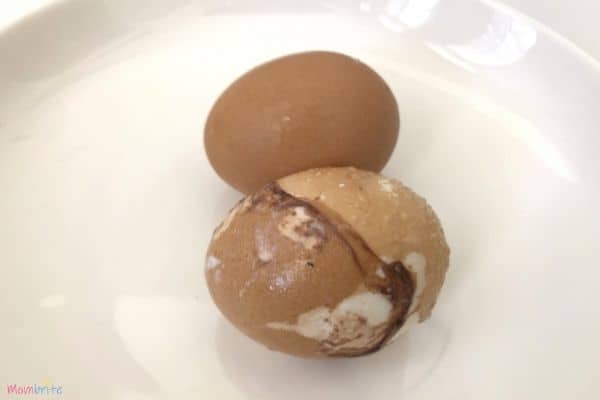
Exterior:
The fluoride had an impact on how much the vinegar deteriorate the eggshell. You can see the difference between where we applied the toothpaste versus not. A lot of the toothpaste did fell off and mix with the vinegar, but even then, you can see fluoride helped protect the eggshell.
If there was no fluoride to help strengthen the eggshell and defend against the acid, you would have gotten a rubber egg as we saw in the bouncy egg experiment.
Interior:
The egg white remained intact with no change in color.
Science Behind the Tooth Decay Experiment with Eggshells
My son asked me at the beginning of this experiment: are teeth made of bone? The simple answer is no, but they do contain inorganic minerals like calcium, just like bones. Enamel is the outermost layer of the crown (the visible portion of the tooth) and protects our teeth from harmful bacteria.
Leftover food particles and saliva mix in our mouth after meals and create plaque. Dental plaque begins forming on teeth 4-12 hours after brushing, so it’s essential that you brush at least twice a day. Food high in sugar like candy or even fruit can cause an increase in plaque.
The bacteria in the plaque produce acids (represented by the lemon juice and vinegar in this experiment) that can eat away at your tooth enamel. As your enamel weakens, bacteria can eat into your tooth, forming the dreaded cavities. Without proper treatment for cavities, tooth decay can continue and destroy your tooth.
Fluoride toothpaste can help protect teeth against tooth decay. The fluoride combined with the calcium and phosphate in your enamel form a strong barrier to prevent cavities from forming. That’s why it’s important to brush regularly with fluoride toothpaste and visit your dentist regularly for fluoride treatments.
Conclusion
This tooth decay eggshell experiment gives your kids a visual representation of what happens to teeth when they don’t brush. Their teeth can be stained and even worse, eaten by the acid produced by bacteria.
That’s why it’s important to brush frequently and brush thoroughly. Teaching your kids the importance of taking care of their teeth will help them form healthy habits.
If you like this experiment, make sure to check out the naked egg experiment to see how you can make a raw egg bounce!
YOU MAY LIKE:
